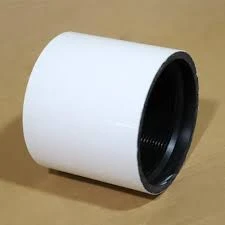- Afrikaans
- Albanian
- Amharic
- Arabic
- Armenian
- Azerbaijani
- Basque
- Belarusian
- Bengali
- Bosnian
- Bulgarian
- Catalan
- Cebuano
- Corsican
- Croatian
- Czech
- Danish
- Dutch
- English
- Esperanto
- Estonian
- Finnish
- French
- Frisian
- Galician
- Georgian
- German
- Greek
- Gujarati
- Haitian Creole
- hausa
- hawaiian
- Hebrew
- Hindi
- Miao
- Hungarian
- Icelandic
- igbo
- Indonesian
- irish
- Italian
- Japanese
- Javanese
- Kannada
- kazakh
- Khmer
- Rwandese
- Korean
- Kurdish
- Kyrgyz
- Lao
- Latin
- Latvian
- Lithuanian
- Luxembourgish
- Macedonian
- Malgashi
- Malay
- Malayalam
- Maltese
- Maori
- Marathi
- Mongolian
- Myanmar
- Nepali
- Norwegian
- Norwegian
- Occitan
- Pashto
- Persian
- Polish
- Portuguese
- Punjabi
- Romanian
- Russian
- Samoan
- Scottish Gaelic
- Serbian
- Sesotho
- Shona
- Sindhi
- Sinhala
- Slovak
- Slovenian
- Somali
- Spanish
- Sundanese
- Swahili
- Swedish
- Tagalog
- Tajik
- Tamil
- Tatar
- Telugu
- Thai
- Turkish
- Turkmen
- Ukrainian
- Urdu
- Uighur
- Uzbek
- Vietnamese
- Welsh
- Bantu
- Yiddish
- Yoruba
- Zulu
Casing Thread Standards and Coupling Types for Oil and Gas Applications
Understanding Casing Threads and Couplings in Oil and Gas Industry
In the oil and gas industry, the ability to extract resources efficiently and safely is paramount. One crucial aspect of achieving this is the use of casing threads and couplings, which play a vital role in ensuring the structural integrity of wellbores. This article delves into the purpose, types, and specifications of casing threads and couplings, while also examining their significance in drilling operations.
What Are Casing Threads and Couplings?
Casing threads are helical grooves that are machined into the ends of casing pipes, allowing for them to be screwed together, forming a continuous cylindrical structure. This assembly is typically referred to as a casing string. Couplings, on the other hand, are specialized fittings that connect two lengths of casing together. The combination of casing threads and couplings creates a robust system designed to withstand the extreme temperatures and pressures associated with oil and gas extraction.
Importance of Casing Threads and Couplings
Casing serves multiple essential functions within a wellbore, including providing support to the walls of the borehole, protecting fresh water aquifers, and preventing the collapse of the well structure. The integrity of the casing system is critical to maintaining the safety and efficiency of drilling operations. Any failures in the casing threads or couplings can lead to catastrophic consequences, including blowouts or contamination of water sources.
Furthermore, the compatibility of different casing threads and couplings is crucial. Incompatible threads can lead to improper sealing, resulting in leaks and loss of well integrity. Therefore, industry standards have been established to regulate the specifications and dimensions of casing threads and couplings.
Types of Casing Threads
There are several types of casing threads, with each designed for specific applications and environments
. The most commonly used threads include1. API Threads These are regulated by the American Petroleum Institute and are commonly found in the industry. They are known for their compatibility and ease of use. 2. Premium Threads These are specially designed for high-pressure and high-temperature applications. Premium threads offer superior sealing capabilities and are preferred in challenging drilling environments.
casing threads and couplings

3. Eccentric Threads Typically used in situations where casing strings must be rotated under load, eccentric threads help alleviate stress on the connections, reducing the likelihood of failures.
4. Specialty Threads These include any customized threads designed for specific well conditions or requirements. Specialty threads may be designed to resist corrosion, wear, or other environmental factors.
Couplings Types and Specifications
Couplings also come in various types, each designed to meet specific needs. Common types include
1. Conventional Couplings These standard couplings are typically used for connecting regular casing sizes and are less expensive but may not provide the highest sealing capabilities.
2. Premium Couplings Designed to match premium threads, these couplings offer enhanced sealing properties and can withstand higher pressures and temperatures.
3. Threaded and Coupled Pipe (TCP) This method uses a combination of threaded casing pipes and couplings to create a rigid structure that offers enhanced performance in demanding applications.
Conclusion
Casing threads and couplings are integral components of the oil and gas drilling process. Their design, compatibility, and application are critical in maintaining the integrity and safety of wellbore systems. As drilling technologies continue to advance, the need for high-quality casing threads and couplings will only grow, ensuring that the industry can extract resources efficiently while minimizing risks. Understanding these components helps to appreciate the complexities involved in drilling operations and the importance of adhering to industry standards for casing integrity.
-
Tubing Pup Joints: Essential Components for Oil and Gas OperationsNewsJul.10,2025
-
Pup Joints: Essential Components for Reliable Drilling OperationsNewsJul.10,2025
-
Pipe Couplings: Connecting Your World EfficientlyNewsJul.10,2025
-
Mastering Oilfield Operations with Quality Tubing and CasingNewsJul.10,2025
-
High-Quality Casing Couplings for Every NeedNewsJul.10,2025
-
Boost Your Drilling Efficiency with Premium Crossover Tools & Seating NipplesNewsJul.10,2025







